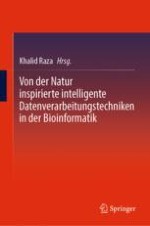2024 | OriginalPaper | Buchkapitel
Bedeutende Innovationen in naturinspirierten intelligenten Computertechniken zur Identifizierung von Biomarkern und potenziellen therapeutischen Mitteln
verfasst von : Kayenat Sheikh, Salwa Sayeed, Aisha Asif, Mohd Faizan Siddiqui, Misbahuddin M. Rafeeq, Ankita Sahu, Shaban Ahmad
Erschienen in: Von der Natur inspirierte intelligente Datenverarbeitungstechniken in der Bioinformatik
Verlag: Springer Nature Singapore
Aktivieren Sie unsere intelligente Suche, um passende Fachinhalte oder Patente zu finden.
Wählen Sie Textabschnitte aus um mit Künstlicher Intelligenz passenden Patente zu finden. powered by
Markieren Sie Textabschnitte, um KI-gestützt weitere passende Inhalte zu finden. powered by
